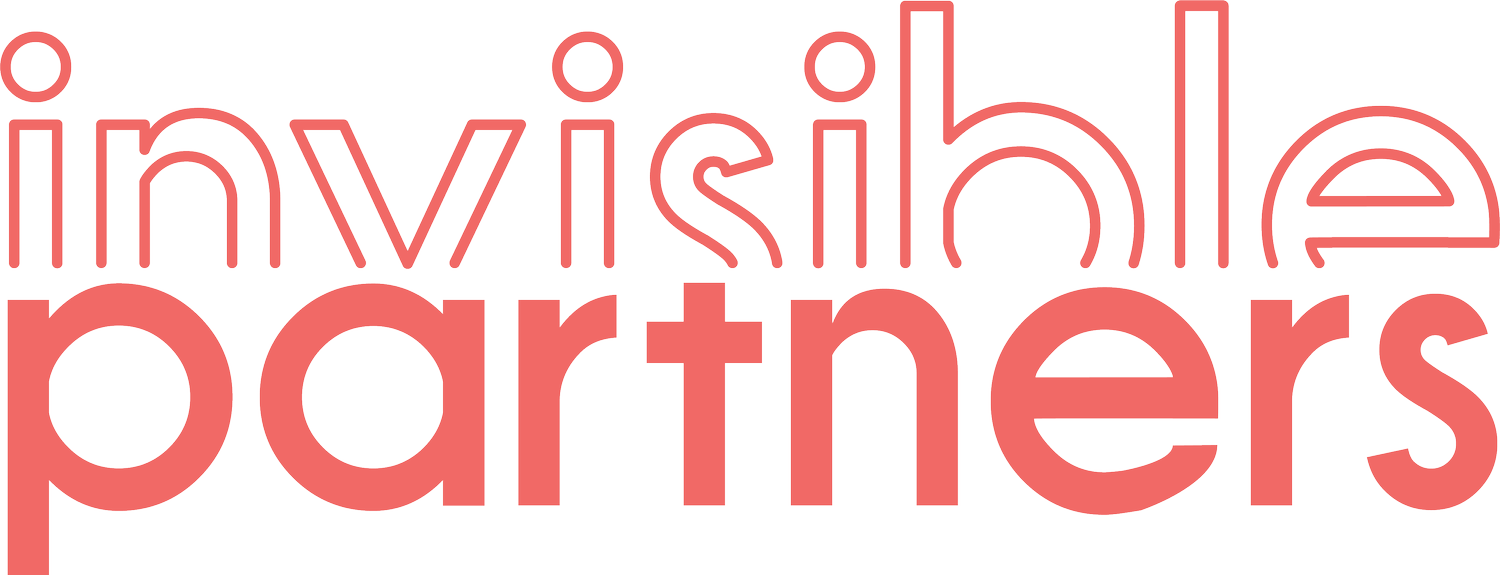The Invisible Partners 7 step hiring strategy
This is our blueprint, our ethos, our special sauce, our what-ever-you-want-to-call-it.
Our 7 step hiring framework details how we approach each component of any hire, from go to woah.
Every time an Invisible Partner heads off into a work engagement, they take this Framework with them in their hot little hands. We share it with clients so they can understand where the gaps are in there hiring strategy, and then we use it to fix them!
Long content warning! This stuff is good, but it’s comprehensive.
You might like to watch this video of Sarah presenting this strategy on Youtube instead!
Step 1
Organisational Mission
In 1962, President John F. Kennedy visited NASA for the first time. During his tour of the facility, he met a janitor who was carrying a broom down the hallway.
The President then casually asked the janitor what he did for NASA, and the janitor replied, “I'm helping put a man on the moon.”
The Organisational Mission is your ‘north star’ for hiring
Understanding the direction of an organisation and each team within it, is the first step to creating an effective talent strategy. Clearly understanding how the role of every single position in the company contributes to the collective mission highlights areas that need tweaking.
As businesses grow and evolve, they hire more people to do more stuff often without a lot of consideration as to how that stuff gets them closer to the end goal.
Issues originating from an unclear mission:
Poor culture
High attrition
Role overlap
Ambiguity of an individual’s mandate
Poor succession planning
No individual success measures
How to fix it:
Employer branding is, in essence, a company's reputation. Being able to articulate it in order to showcase the company to the world has become vital. Not only does it allow them to stand out amongst the hundred other company’s hiring, but it actually attracts the right kind of employee to the business, saving them time and money.
In fact, according to a 2021 study by Glassdoor, a strong employer brand can reduce the cost per hire by as much as 50%, and a negative reputation can cost a company as much as 10% more per hire.
The reasons to invest in employer branding are plentiful, but how would you actually go about building, or improving it?
Get the organisational mission clear and agreed upon with business leaders,
Clearly define relationships between organisational success and each individual’s contribution,
Develop, or improve upon, any existing OKR framework and implementation.
Success Profile
Step 2
Selection Tools
Survey top performers.
Why do they love to work for your company? What attracted them in the first place and what makes them stay?
Analyse hiring data.
Make data-led judgements through research and observations. (Refer to Step 2)
Nail your vision, mission and values.
Focusing on these core business attributes allows you to draw a really clear picture of your company’s objectives. (Refer to Step 1)
Reviews.
If you don’t have any or enough, ask for team members to get involved by offering their view on SEEK, Glassdoor, INDEED, Facebook, LinkedIn
Website.
Let people peer behind the curtain into what it’s like to work with you from curated video content through to capturing team fun days, including building a profile of the leaders across the business.
Social Media.
LinkedIn is a holy grail of information on businesses. Update your company LinkedIn page (which is free), and ensure all your employees are advocates for your brand through their personal LinkedIn profiles.
When you start thinking about a position you need to hire for, you naturally start to build a checklist of the role requirements which can lead to your job ad looking similar to a PD.
And that isn’t inspiring anyone …
In fact, not only is it uninspiring, it also casts a pretty wide net into the sea of candidates. A lot of people may very well be able to do the job, but are they the perfect fit?
So, let’s rein it in a bit. Start thinking about the attributes of the person that you would like to attract. Using that detail you will be able to find someone that ticks all the boxes. (If this is starting to sound similar to online dating, that's because … well, it kind of is).
What do you include in your profile to attract your perfect partn … ahem, successful candidate? We find it best to break it down into these three categories:
Skill
What knowledge, qualifications or specific skills are required to do the job?
Eg; Specific coding language, prior experience managing a P&L, a mandatory professional / clinical qualification, numerical proficiency, remote leadership etc.
Motivation
What are the individual drivers and are they in line with the scope of the role, i.e are both the organisation’s and the individual’s ambitions aligned?
Things to consider here would be career aspirations, mandate and drive.
Fit
What personal attributes, influencing and communication style works best in the team and company?
Eg; Is a consultative and considered approach best or is direct and outspoken more effective.
We have all been involved in the frustrating situation where 3 different decision makers are backing 3 different candidates based on feelings coming from 3 different guts.
By introducing a more data driven selection process you will identify the best person for the role, not just the winner from a game of scissor paper rock…
Along with the familiar Standard Interview (which is useful in some cases, but can often feel like a live reading of the CV) here are a few tools we advocate adding to every kit:
People Analytics
Find out how they really feel
Step 4
Step 5
Tell the world
In the same way that marketing departments sift through analytics with an eagle eye to ensure they’re generating a positive ROI, every business needs to gather and analyse data relating to their people to ensure they’re fostering a strong talent function.
Insight from key areas:
Employee experience and performance
Retention and attrition rates
Time and cost to hire
Campaign measures (advertising response rates, sourcing responses)
Candidate & hiring manager experience
Past data is pure GOLD!
Reviewing 12 months of past hiring data can give insights to inform the workforce plan (what capabilities are missing that can be identified), the hiring strategy (what did you miss through the hiring process that you can incorporate into future recruitment) and employee engagement (is what you’re ‘selling/representing’ in market the lived experience of employees in your organisation?).
This stage of analysis typically sits in our discovery phase of an engagement and is critical to explore before we start making recommendations about what to improve.
Employer Brand
Step 3
Step 6
Recruitment Campaign
Recruitment campaigns can learn a lot from the great strides that marketing campaigns have made over the last decade, because in fact, recruitment is just that; marketing, dressed up differently.
The company is the brand, the vacancy is the product and the candidate is the customer.
If we want to match the role with the right person, then we need to take a page or two from ‘Marketing 101’ and line up our targeting arrows towards the right people with a message that will resonate with them, and land it smack bang in a spot they’re bound to see it.
Who are we targeting? (AKA The Job Brief)
The more detailed you are with getting the picture of this person crystal clear, the better the result will be. Your success profile will come in handy here. There is a common misconception that by making the targeting too specific you eliminate too many potential candidates, but in actual fact you’re eliminating them for a reason...
Where are we reaching them? (AKA The Channel)
When you know who the person is, you can find out where they hang out. The obvious platforms are Seek and LinkedIn, but getting a bit more creative could position your ad directly in your ideal candidate's hot little hands. Hiring for a graduate position in NSW, try UNSW forums or GradAustralia. Need an MD for a growing tech operation, reach out to SmartCompany. Increasing your construction team in Albury, the local paper there is still hot property!
What message is going to excite them? (AKA The Ad Copy)
Writing an inspirational recruitment ad is a whole lesson in and of itself. Old school, bullet pointed ‘Skills Required’ lists are not exciting anyone.
Be as creative with it as is appropriate, and don't be afraid of letting the audience know that it was, in fact, a human being that composed it. Keep bringing your attention back to your ideal candidate when crafting the language and inclusions of your job ad, this will give your ad a particular tone that speaks directly to them.
Step 7
Process & Tech Optimisation
Systems and processes. You either love ‘em or you hate ‘em. Either way, there’s no denying they are the real superheroes of work. The effort you put in from previous steps will get you far, but getting the right processes in place and the right tech to support it will shoot you to the moon.
Most importantly, you’ll be able to stop reinventing the wheel every time you go to hire, saving effort, time and money.
Candidate journey mapping
Documenting the complete ideal life cycle of a candidate through to employee. Using this as a ‘hiring process blueprint’, you can identify and plug the holes in your current process, or build a well oiled machine from scratch.
Reducing time & cost to hire
Starting from scratch each time you go to hire is a pain. Having a step by step process with all relevant documentation ready to go is the perfect remedy. By assisting companies with their internal hiring processes, we have witnessed the time it takes from ‘deciding to hire’ to ‘contract signed’ go from 6 months down to 2 weeks.
If your processes are right your hiring decisions will be right, resulting in excellent retention rates.
Plus, removing the need for Agencies and their high fee’s is where you can really save BIG.
Building & nurturing Talent Pools
A talent pool is a database of potential talent which you can and should dip into anytime you have a vacancy. The more you nurture and engage your talent pool, the more qualified they become. Building a talent pool can be straightforward, including near misses for previous roles you’ve hired for, referrals from employees, or even an ‘always on’ recruitment campaign.
Introduce appropriate tech
There’s no one-app-fits-all answer here. The best tech is the tech that is tailored to your specific needs and budget. The range of solutions starts from spreadsheets all the way to automated ATS’s.



